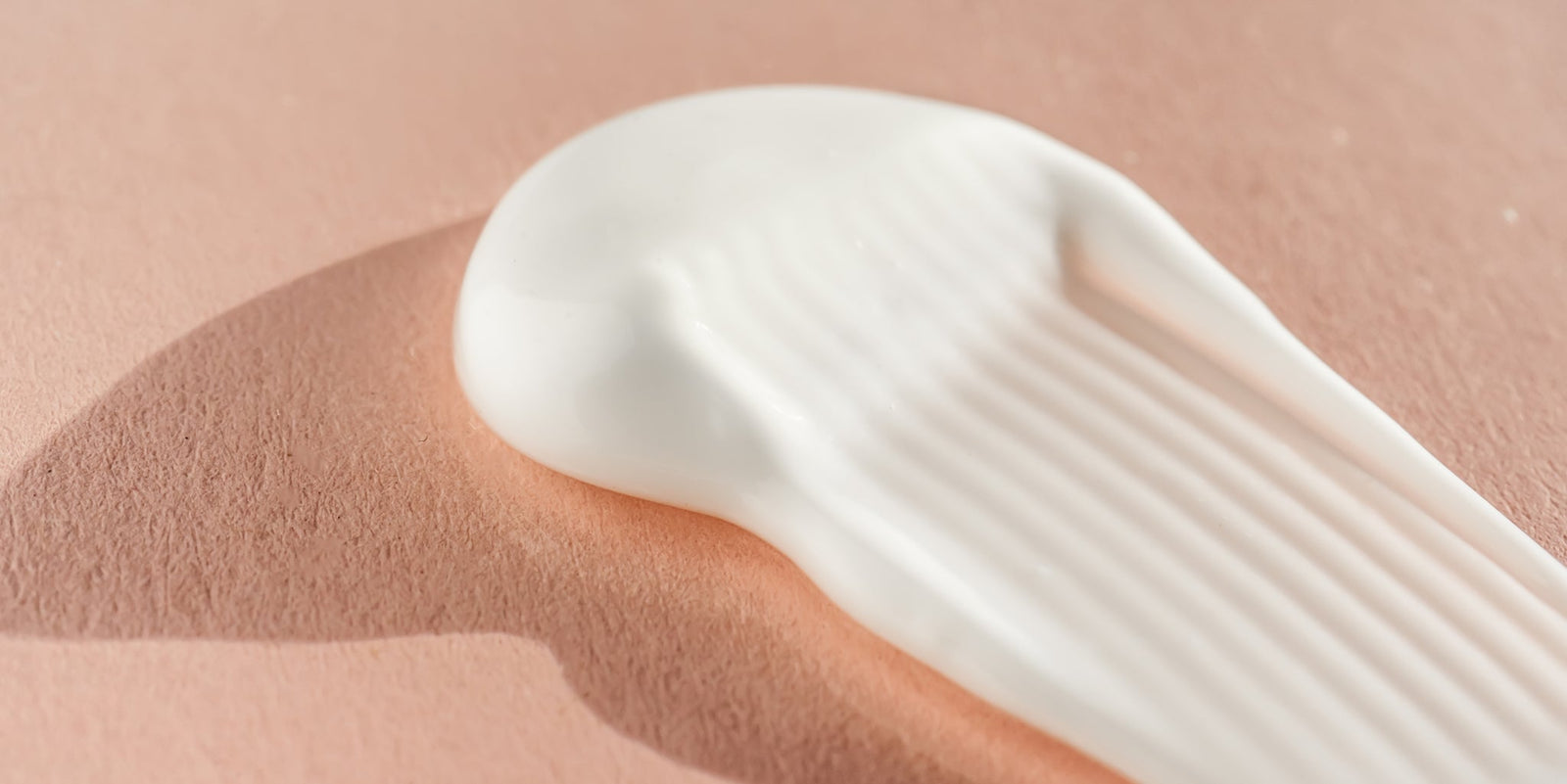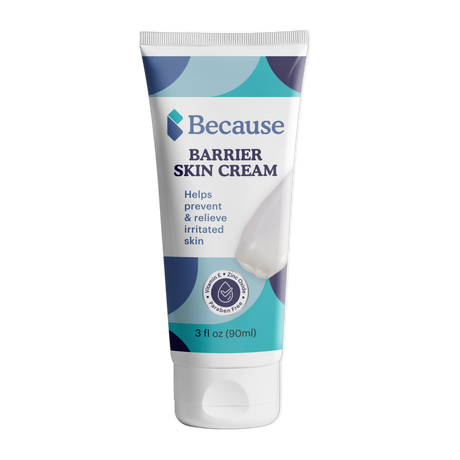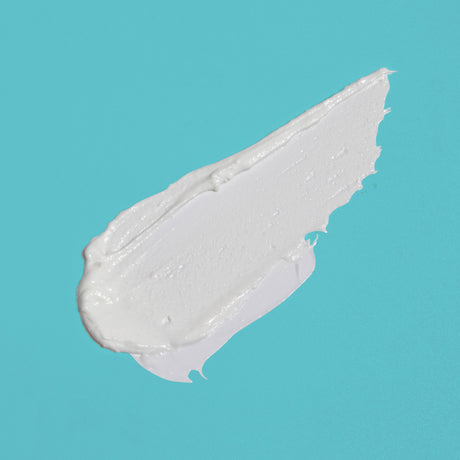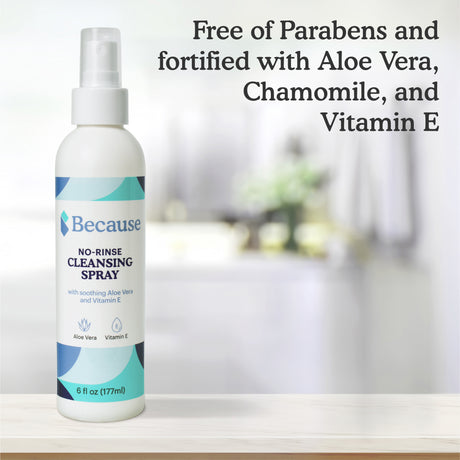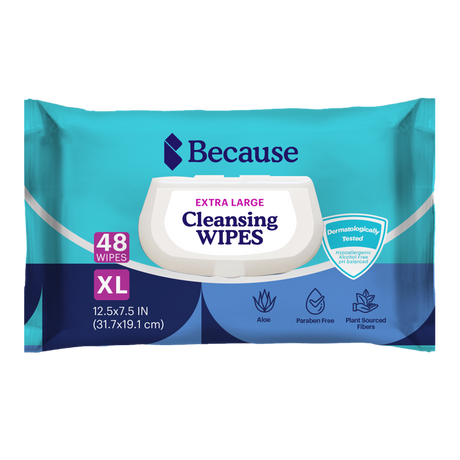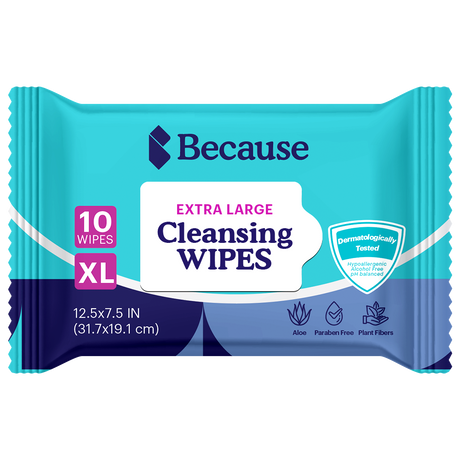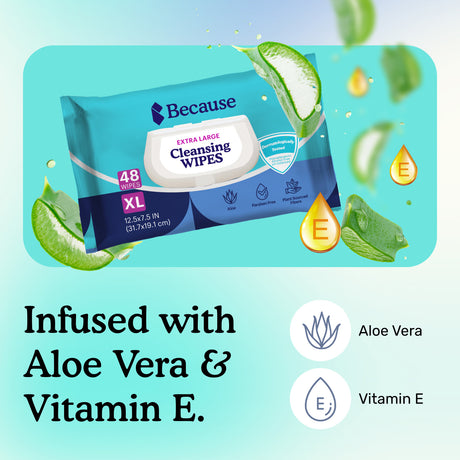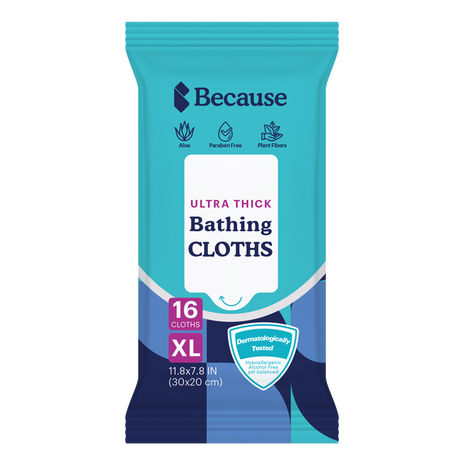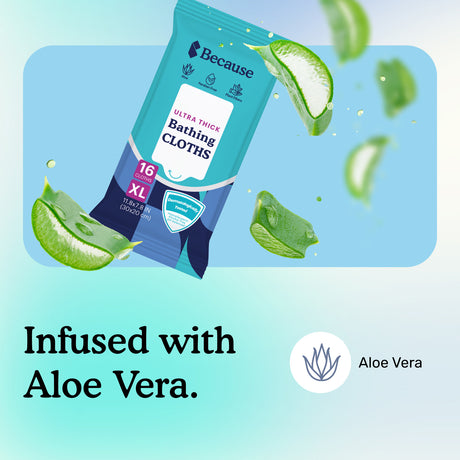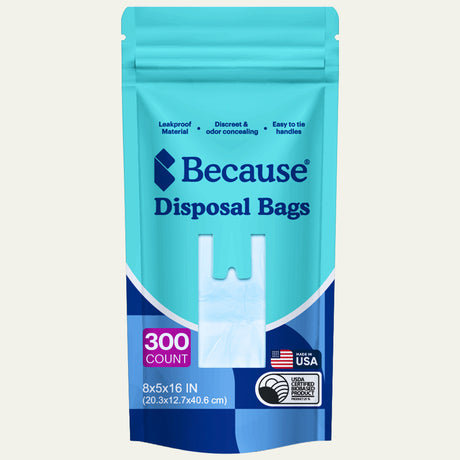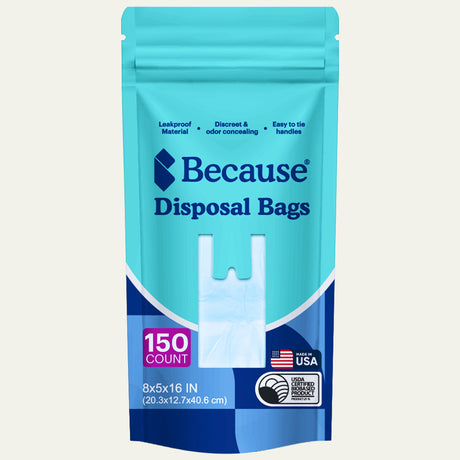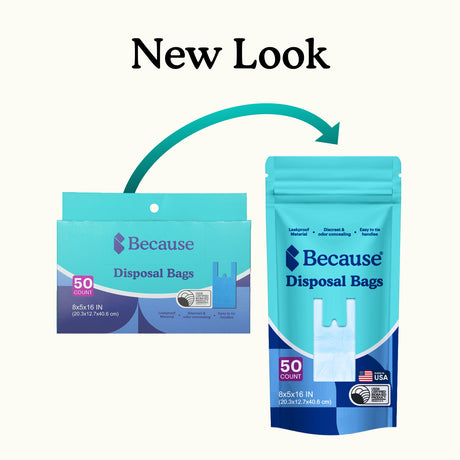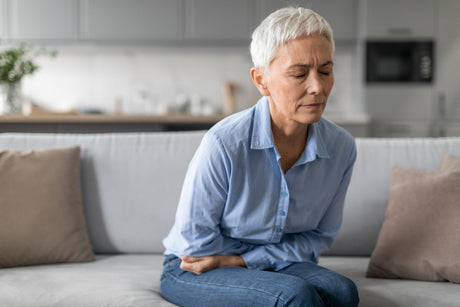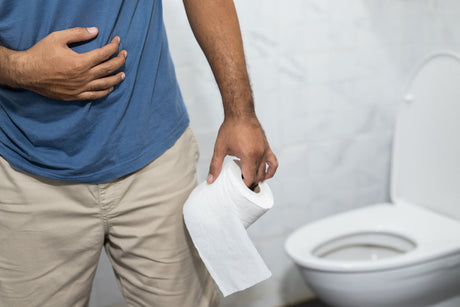Whether you’re newly incontinent or have had incontinence for years, one thing you know is that accidents can irritate your skin. And the wetness and chafing isn’t just uncomfortable, it can lead to skin conditions like dermatitis, sores, and persistent skin infections.
Good skin care is essential for good health, especially when dealing with urinary and bowel incontinence. By maintaining healthy skin, you can improve your personal comfort and overall well-being.

Why Does Urinary Incontinence Require Good Skin Care?
Your skin is your first line of defense against infection, but when it’s irritated by urine or stool, it can cause skin damage, leaving you vulnerable to bacteria and fungal infections. Incontinence can quickly lead to Incontinence-Associated Dermatitis (IAD) if you don’t take steps to keep your skin clean and dry.
IAD occurs when your skin comes into prolonged contact with urine or stool. Urine, which is naturally acidic, affects your skin’s more alkaline pH level. This can disrupt your skin’s moisture barrier function and leave it more open to sores and infections. Additionally, feces contain enzymes from your digestive tract that can quickly break down your skin, leaving you vulnerable to further infection.
Around one-third of people with incontinence develop dermatitis, which can quickly progress to more serious conditions, but you can avoid this and stay comfortable with proper skin care.
 Daily Skin Care for Incontinence
Daily Skin Care for Incontinence
An everyday skin care routine for someone with incontinence includes three main steps: cleaning, moisturizing, and employing a barrier cream to add extra protection against bladder and bowel leaks.
Cleaning: Keeping your skin clean is the first step in maintaining skin health. Look for soap-free and alcohol-free cleansers that won’t dry out your skin, and try to clean your skin as soon as possible after accidents. No-rinse cleansing sprays and wipes are a good option for cleaning your skin after an accident because they will help remove waste without making your skin overly dry or irritated.
Moisturizing: Use a scent-free lotion with soothing ingredients like aloe and Vitamin E to reduce skin inflammation, and be ready to try out a few different kinds to find what works for your skin. A good lotion will improve your skin health so you can feel comfortable even when wearing incontinence underwear all day.
Barrier Cream: Barrier creams are an integral part of the skincare routine for anyone who wears an adult diaper or incontinence underwear. A barrier cream is different from a moisturizer in that it is designed to sit on top of your skin and provide an extra moisture barrier for the times when you do have accidents. Look for barrier creams containing zinc oxide, as this seals out moisture and guards skin against wetness from sweat, urine, and other body fluids. This can help prevent rashes and sores. A good barrier cream will not easily rub off, and can help protect your skin from chafing when wearing incontinence products.
In addition to your daily care routine, keep your skin dry with incontinence underwear that wicks moisture away from your body, so you don’t have to feel wet even after you have a bladder leak.

Which Products Protect the Skin Best from Incontinence?
To protect your skin from incontinence, you should look for gentle skin cleansers, moisturizers, and moisture barrier creams as well as comfortable incontinence underwear that won’t chafe and will lock away liquid from bladder and bowel leaks. Because Market offers several products that protect your skin from incontinence.
Skin Cleaners
No-rinse cleaning sprays and wet wipes are a convenient way to clean and soothe your skin after accidents. Because Market’s no-rinse cleaning spray is gentle and alcohol-free, with ingredients to protect irritated skin. It’s also pH-balanced, meaning it won’t affect your skin’s natural pH balance.
If you prefer wipes, the cleaning wipes from Because are also pH balanced and are easily disposable.
Moisturizers and Barrier Creams
Skin creams with healing ingredients like Zinc and Vitamin E are a great option for people who wear incontinence underwear and need to repair and protect their skin against accidents and chafing.
Because Market’s Barrier Skin Cream with Zinc Oxide will create that important moisture barrier between your skin and any liquid messes, and is ideal for people who wear incontinence products throughout the day.
Incontinence Pads, Guards, and Underwear
To ensure your skin isn’t exposed to urine or stool for long periods, bring an extra pair of incontinence underwear or pads to change into after accidents when you’re away from the house. This is especially important when you have fecal incontinence, because although there are many good products for managing bowel incontinence, they won’t keep the solid portion of your stool away from your skin.
If you have infrequent or low-volume leaks, pads and guards might be a good choice for you. If you have larger and more frequent episodes, try incontinence underwear. For overnight protection, look for maximum-absorbency underwear and bed protectors.
A good fit will reduce chafing and make your incontinence underwear more effective, for more help choosing between pads, guards, and underwear, check out our guide to choosing the right absorbency and style of incontinence protection for your needs.
You can also take our fit finder quiz to get a starter pack of incontinence underwear or pads from Because.

How to Treat Incontinence Skin Breakdown
Even with the best skincare routine, you might occasionally have rashes and skin breakdown.
If you develop incontinence-associated dermatitis (IAD), the first step is to prevent it from getting worse. This involves finding better-fitting underwear, using healing salves, and doing your best to keep your skin dry and clean between accidents. Some tips for healing your skin after you’ve developed dermatitis or skin sores include:
Get a better-fitting pair of underwear: Often, dermatitis and sores occur because of physical chafing around the leg openings of your underwear or between your legs, where material gets bunched up. If your underwear is bunching and chafing, this is a sign it’s not a good fit. Try out a few different brands and sizes to find a fit that doesn’t rub against your skin.
Change your underwear as soon as possible after accidents: The longer your skin is in contact with waste, the more the acid and enzymes will break down your skin. This is especially important when you have fecal incontinence, as the enzymes in stool are very irritating to your skin and the associated bacteria can cause infection.
Use healing salves: After your skin is clean and dry, apply a medicated salve to help with pain and protect damaged skin while it heals.
These steps can help to reduce or reverse IAD in early stages, but you should see your doctor if you have persistent skin irritation or start to develop sores, because this can easily develop into something more severe and difficult to treat.

Incontinence Skin Care Tips for Caregivers
If you are a caregiver for someone with incontinence, you can help your recipient with their skin care by providing the products they need and checking in with them to see how their skin is feeling. For people with limited mobility or cognitive disorders, you might also need to help with cleaning and changing their underwear. Remember to use gentle, soap-free cleansers when cleaning up between accidents.
Prepare for accidents on the go by carrying cleaners and extra incontinence underwear with you when you leave the house. You might also want to bring along disposal bags, so that used products can be disposed of discreetly.
Remember that people can feel embarrassed or ashamed of their incontinence, so they might not always tell you if they’ve had an accident or be willing to ask for help. Remind them that incontinence is a common medical condition and treat the symptoms matter-of-factly, to make the interaction less distressing for the person you care for.
Skin care is an important aspect of health for everyone, but is especially important for people with incontinence. Although incontinence can irritate your skin, with a regular skin care routine you can keep your skin healthy and free of infection so that you can go about your day feeling comfortable and confident.
Sources:
DermNet NZ. (n.d.). Incontinence-associated dermatitis. Retrieved from https://dermnetnz.org/topics/incontinence-associated-dermatitis
Beeckman, D., Schoonhoven, L., et al. (2009). Pressure ulcers and incontinence-associated dermatitis: Effectiveness of the pressure ulcer classification education tool on classification by nurses. International Journal of Nursing Studies, 46(11), 1446-1453. doi: 10.1016/j.ijnurstu.2009.04.012
Gray, M. (2002). Incontinence-associated dermatitis: A comprehensive review and update. Journal of Wound, Ostomy, and Continence Nursing, 29(6), 338-345. doi: 10.1067/mjw.2002.129827
MedlinePlus. (n.d.). Incontinence - overview. Retrieved from https://medlineplus.gov/ency/article/003976.htm
Harvard Health Publishing. (n.d.). Proper skin care "down there". Retrieved from https://www.health.harvard.edu/bladder-and-bowel/proper-skin-care-down-there
